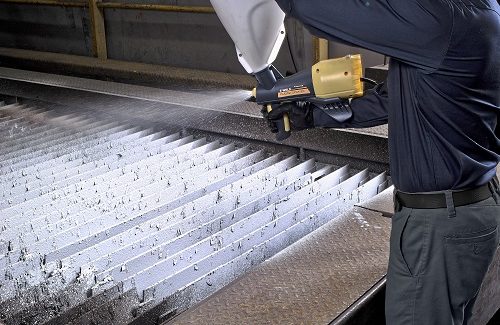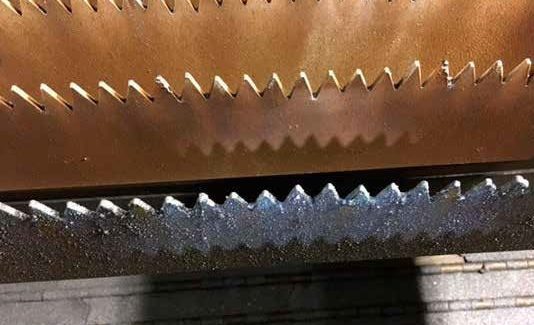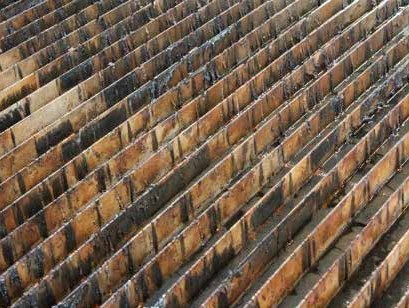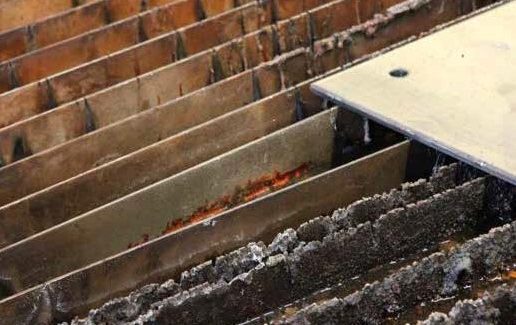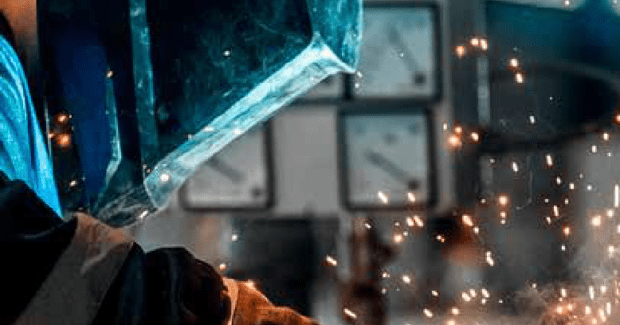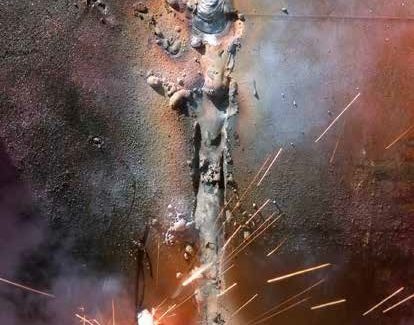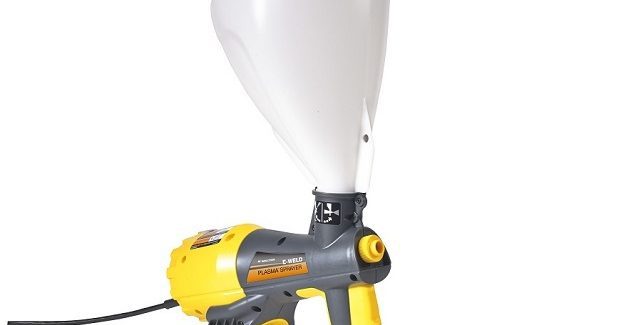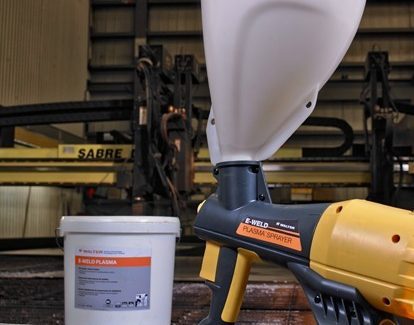The Revolution of Ceramic-Based Heat Shield Coatings
Though traditional coatings help prevent spatter and slag buildup that plagues welding, laser cutting and plasma cutting operations, they must be re-applied frequently, which adds to labor costs. To significantly reduce the cost impact of slag and spatter buildup, engineered ceramic coating technology is now the way to go.
Posted: December 11, 2017
Grinding, chiseling, rejects, rework, replacing welding nozzles and cutting table slats . . . these hassles, costs, and delays that are caused by spatter and slag are well known in metalworking. Spatter and slag plague welding, laser cutting, and plasma cutting operations, wasting time, incurring removal costs, and reducing job satisfaction. Preventing buildup in the first place is ideal, but even when following best practices, spatter and slag still occur.
COSTS OF SLAG BUILDUP ON PLASMA CUTTING AND LASER CUTTING TABLES
When slag sticks to the slats on plasma cutting tables, the buildup may create irregularities in the surface. A table that is no longer flat due to slag buildup can result in uneven cuts, decreased quality, and additional work down the production line to compensate. If slag continues to build, it can even “bridge” between the slats. Bridges act as clogs that prevent air from circulating so that fumes aren’t cleared efficiently, resulting in an undesirable working environment.
To produce quality cuts and maintain a safe working environment, slats must be either cleaned or replaced regularly. Cleaning slats is a labor-intensive, physically demanding, unpleasant job often left to “the new guy.” Removing and replacing slats causes a shutdown lasting a day or two when there is zero productivity. The slag problem can now be greatly reduced thanks to ceramic-based heat shield technology. Ceramic is known as an ideal coating for withstanding high temperatures, and ceramic coatings have been used to prevent adhesion in other high temperature applications, such as die casting, but were previously not available in a formula specifically for the plasma cutting environment.
A typical plasma cutting table will require a shutdown ranging from one day every six months to two days every three months to remove slag and replace slats. Now there is ceramic anti-spatter coating technology that is resistant to extreme heat, wear resistant and cost effective for a large surface area. For example, E-WELD Plasma™ can be applied to plasma cutting tables to inhibit slag adherence and reduce the buildup of slag over time. The coating is sprayed on new slats and dries for four hours or overnight. Slag that hits the coated slats does not stick; instead, it falls to the floor. This formula lasts for weeks before needing a light re-application. When slats are protected with a ceramic heat shield, they can be used longer before needing to be replaced, and then only a half a day is needed to replace the slats and coat them.
Ceramic heat shield coatings also eliminate health and safety hazards associated with current cleaning processes, such as grinding and chiseling. Coated slats with no slag buildup allow air to circulate for better ventilation, and cut quality is improved by maintaining a flatter cutting surface.
SPATTER: A ROOT CAUSE OF WELDING REJECTS AND REWORK
If hot spatter fuses to welding nozzles and tips, the resulting clog inhibits the shielding gas from flowing freely. Poor gas flow can cause inconsistent welds, porosity, and low quality results with a high rework and rejection rate. Spatter is removable, but it’s unpleasant, not easy, and the costs add up. Dealing with spatter requires a regular investment in spatter-removal equipment, such as grinding wheels, additional wire that’s lost in spatter, time spent removing spatter, and time spent reworking welds that were rejected due to porosity. An additional cost is reduced job satisfaction due to a less-than-ideal welding environment. Replacing a dissatisfied welder may not be easy. With the current competition for skilled welders, the cost of losing an unhappy skilled worker cannot be discounted.
Non-ceramic protective coatings provide some help in preventing spatter buildup, but they must be re-applied frequently, meaning they still contribute to labor costs: re-applying a non-ceramic coating takes time . . . day after day the costs accumulate, and gel coatings can liquify and contribute to porosity. But ceramic sprays can resist temperatures up to 1,832 deg F, and evenly coating the exterior and interior of welding nozzles and contact tips with a heat-resistant ceramic formula can offer lasting performance that protects the surfaces for up to eight hours. One of our customers tracked the actual costs of using our ceramic-based coating compared to another gel-based formula they were using on their nozzles. They reported an impressive 81 percent reduction in the annual cost of nozzle replacement and treatment, and an 80 percent reduction in the labor cost of removing spatter. In addition to protecting tables and nozzles, ceramic heat shield coatings can also be applied to nearby areas to prevent patter and slag from sticking to exposed equipment.
Traditional cleaning solutions and coatings can contain toxic or corrosive substances, but ceramic coatings are specifically formulated to be non-toxic and “label-free,” with no hazardous materials. Unlike some other anti-spatter compounds, they do not contain harmful chemicals like methylene chloride, a known carcinogen that can cause headaches, dizziness, and a wide array of long-term medical issues.
HOW TO OPTIMIZE THE WORK ENVIRONMENT
An optimized and safe shop floor will reduce costs and help attract and retain skilled workers. Here are some steps that production managers can now take to optimize their work environment and have a real impact on productivity:
- Evaluate their MRO and/or production processes to uncover problematic areas within their facility.
- Source solutions and estimate the total cost (or cost improvements) of replacing existing equipment/processes.
- Pilot-test solutions in one location to measure effectiveness and real-world cost reductions.
- Deploy solutions across the entire organization once the benefits are proven.
- Use the appropriate safety products to help the workers achieve greater safety and comfort.
- Document the use case and demonstrate the cost savings and contribution to profitability to build support for further optimization and safety initiatives.


